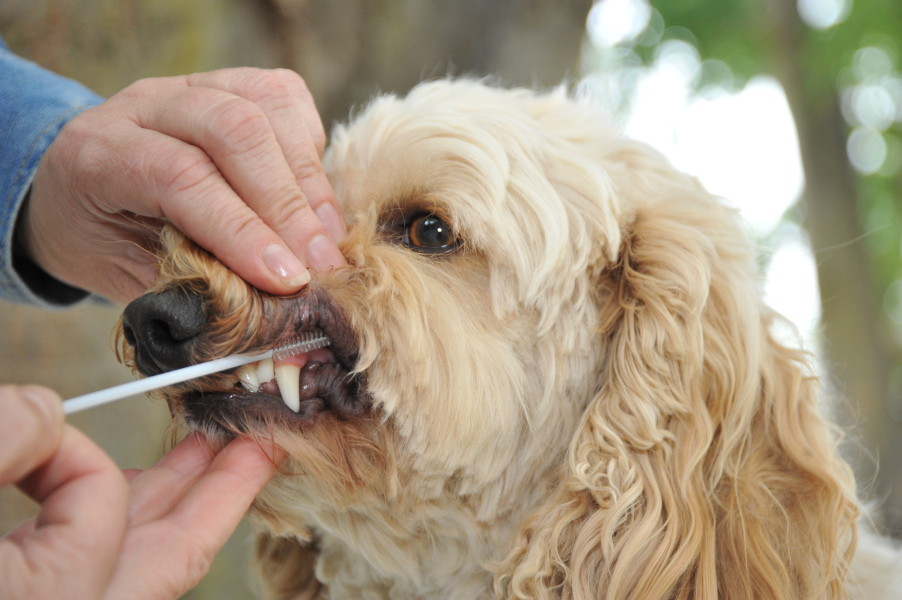Quick Summary
Click here for Price and Turnaround Time
Phenotype: Neuronal ceroid lipofuscinosis is characterized by a progressive loss of coordination, blindness and behavioral changes beginning at 1.5 to 2 years of age.
Mode of Inheritance: Autosomal recessive
Alleles: N = Normal, CL = neuronal ceroid lipofuscinosis variant
Breeds appropriate for testing: Golden Retriever and Golden Retriever crosses
Explanation of Results:
- Dogs with N/N genotype do not have the variant associated with neuronal ceroid lipofuscinosis found in Golden Retrievers.
- Dogs with N/CL genotype are carriers of the neuronal ceroid lipofuscinosis variant found in Golden Retrievers, but will not develop neuronal ceroid lipofuscinosis. If two carriers are mated, approximately 25% of the puppies are predicted to develop the disease and 50% are predicted to be carriers.
- Dogs with CL/CL genotype are homozygous for the neuronal ceroid lipofuscinosis variant found in Golden Retrievers and are expected to develop the disease.
Results of this test can be submitted to the OFA (Orthopedic Foundation for Animals)
Golden Retriever Health Panel
$135 per animal
Sample Collection
Dog DNA tests are carried out using cells brushed from your dog's cheeks and gums. The preferred cytology brushes are sent to you by mail, or you may provide your own brushes. For accepted alternative brushes, click here
We recommend waiting until puppies are at least three weeks old before testing.

Step-By-Step:
- Make sure the dog has not had anything to eat or drink for at least 1 hour prior to collecting sample.
- When swabbing puppies, isolate each puppy from the mother, littermates and any shared toys for 1 hour prior to swabbing. Puppies should not have nursed or eaten for 1 hour prior to collecting sample.
- If collecting samples from more than one dog, make sure to sample one dog at a time and wash your hands before swabbing another dog.
- Label brush sleeve with name or ID of dog to be sampled.
- Open brush sleeve by arrow and remove one brush by its handle.
- Place bristle head between the dog’s gums and cheek and press lightly on the outside of the cheek while rubbing or rotating the brush back and forth for 15 seconds.
- Wave the brush in the air for 20 seconds to air dry.
- Insert brush back into sleeve.
- Repeat steps 5 - 8 for each unused brush in sleeve on a fresh area of cheek and gums. Make sure to use and return all brushes sent by the VGL. In most cases, it will be 3 brushes per dog. If using interdental gum brushes, please note that the VGL requires 4 brushes per dog and only moderate or wide interdental gum brushes are accepted.
- Do not seal brushes in sleeve.
- Place all samples in an envelope and return to the address provided.
ATTENTION:
- Do not collect saliva/drool – the key to obtaining a good sample is getting cheek cells on the swab
- Do not rub swab on the dog’s tongue or teeth – this will result in poor quality sample
- Do not collect a sample from a puppy that has recently nursed – the mother’s genetic material can rub off on the puppy’s mouth and contaminate the sample
Neuronal ceroid lipofuscinosis (NCL) is a group of progressive degenerative diseases of the central nervous system. Signs of disease in affected dogs begin between one and two years of age and include behavior issues such as: anxiety, constant circling, aggression, compulsive behaviors, and loss of learned skills. Additional neurological symptoms include: tremors, ataxia (lack of coordination), localized and generalized seizures, and visual impairment occasionally to the point of blindness. The progressive nature of this disease often results in euthanasia of the affected dog by 3 years, due to the poor quality of life.
In Golden Retrievers, a two base pair deletion in the ceroid lipofuscinosis neuronal protein 5 (CLN5) gene is thought to cause this disease. This two base pair deletion (denoted as c.934_935delAG) causes a frameshift in the gene product that results in a shortened protein (p.E312Vfs*6). The shortened protein is predicted to lack 39 amino acids including those that are essential for proper processing and trafficking of the protein. Specifically, there are several glycosylation sites in this protein that are required for it to be transported to the correct part of the cell where it normally functions to degrade proteins (lysosome). It is hypothesized that lack of normal CLN5 results in abnormal accumulation of storage material particularly in the cells of the central nervous system, leading to disease.
NCL is a recessive trait, meaning two copies of the variant must be present, one inherited from each parent, for the dog to show symptoms. Based on the study that identified this mutation, the allele frequency for the CL allele is rare in the Golden Retriever population (less than 1%). If only one copy is inherited (from either parent), no symptoms will be observed but the animal is a carrier and can pass the variant to its offspring. If two carriers are bred together, each puppy born has a 25% chance of developing NCL. Breeders can use the results of this test to assist with mate selection. Dogs who genotype CL/CL should be clinically evaluated.
